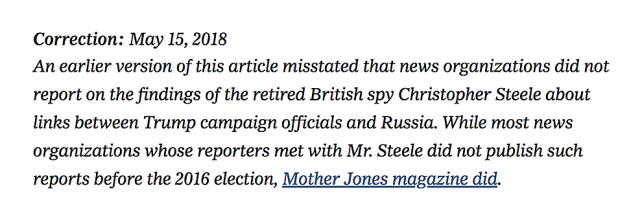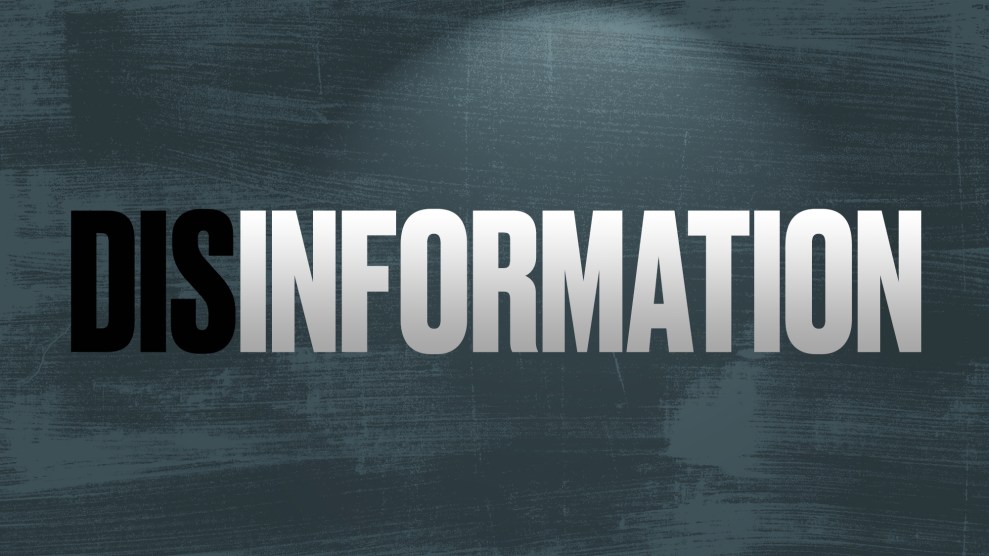“Truth is relative.” Leave it to Rudy Giuliani to efficiently articulate the essence of the Trump era.
Perhaps the presidential lawyer—in explaining how Robert Mueller “may have a different version of the truth than we do”—meant to nod to the ontological question, familiar to any philosophy major (or anyone who’s ever been stoned) of what’s really real.
But he also was describing, in terms reminiscent of Kellyanne Conway’s “alternative facts,” the operative principle of this presidency. That principle is why President Donald Trump lies with such abandon. (The Twitter rant that launched his “spygate” push included 11 untruths in just five tweets, for a total of one lie every three minutes.) Truth, to him and his acolytes, is not a thing that exists. All there is are “versions,” and ensuring that yours prevails.
And how do you ensure that? By attacking every institution that might dare offer an alternate accounting. We don’t know exactly what Trump said when 60 Minutes‘ Lesley Stahl asked why he keeps slamming the press, but her paraphrase—that he does it so that “when you write negative stories about me, no one will believe you”—is compelling, because we see it in action every day.
Take “spygate.” There’s not a shred of evidence for Trump’s claim that his campaign was infiltrated, but a chorus of Republican leaders and right-wing media are now running with it, with the single goal of discrediting Robert Mueller and the FBI. Likewise with Trump’s attacks on the judiciary, the intelligence community, the deep state (a.k.a. America’s civil service), and, again and again, the CROOKED, FAILING press.

We don’t yet know how this particular episode will play out or what fresh lies the news cycle will serve up before we even finish writing this column. But we know it’s time to do more to take on this kind of disinformation. It’s why, at Mother Jones, we’re launching a team to tackle this issue as its own beat. (We’re hoping you’ll help us with a tax-deductible donation. We even made a shirt!)
But there’s more to this issue, so let’s unpack it.
One disinformation tactic that doesn’t get enough attention (but is a favorite of Trump’s) involves shifting the Overton window of acceptable claims.
“Overton window” is the poli-sci term for a common political gambit: Stake out an extreme position, hold fast, and eventually the conversation will shift in your direction. Trump moves the Overton window of truth by making an outrageous claim, forcing his staff and supporters to come up with slightly less colorful versions of the same claim, and ultimately compelling commentators to debate the relative merits of different shades of b.s.
And the press, even a year and a half in, too often lets itself get dragged into this.
Take the right-wing firestorm last week about how news reports were “distorting” Trump’s words about immigrants by failing to point out that he’d referred to “animals” after an official mentioned the notorious MS-13 gang. The White House, in “let’s clear this up” mode, issued a press release with the headline “What You Need to Know About the Violent Animals of MS-13.” Soon enough, the Associated Press took down a tweet about the animal-immigrant comparison, while CNN’s Oliver Darcy posted an entire piece chastising reporters for “taking Trump out of context.”
We’ll never know what the president meant to say. But what he did say was that some of the “people coming across our border” are not human. And just like that, he moved the Overton window to a point where it’s evidently okay to call immigrants “violent animals” so long as you imply that they are also gang members—a notion with lots of ugly history. (If your relatives came to the United States in the 19th or early 20th century, they were among those referred to in cartoons like this.)

What Trump and his allies are doing here is working the refs. You complain long enough about how the press is elitist, biased, and out to get you, and not only do people believe you, but inevitably some in the media will overcorrect in the other direction.
And it works in other areas too: Facebook, as we now know, vastly overreacted to claims of bias in its “trending news” feed in 2016 and eliminated human curators, which opened the barn door to far-right and Kremlin propaganda. Likewise, we now know that the FBI, as it began to investigate Trump, was very mindful of his yelling about a “rigged” election and what he’d do if he found out about the probe.
Which brings us back to something that jumped out at us in a New York Times piece last week about that FBI investigation. The (generally excellent) story claimed that “no news organizations” published articles before the election about the Steele memos and the FBI’s interest in them. Within a few hours, the Times appended this:

Journalists, including the very best, make mistakes. But the fact that the Times keeps getting this wrong (the newspaper had to run a correction on this same issue a year ago) also highlights how the press has still not grappled with its own vulnerabilities in the face of disinformation and propaganda.
In last week’s story, the Times acknowledged for the first time that to some extent, it was played back in 2016:
“The facts [about the investigation] might have devastated the Trump campaign…But in the face of questions from Congress, the F.B.I. declined to tip its hand. And when The New York Times tried to assess the state of the investigation in October 2016, law enforcement officials cautioned against drawing any conclusions, resulting in a story that significantly played down the case.”
That’s a reference to a big Times story that ran on October 31, 2016— “Investigating Trump, FBI Sees No Clear Link to Russia.” The same day, as MoJo readers know, our Washington bureau chief, David Corn, published the first and only preelection story about the Steele memos and the FBI’s interest in the explosive allegations contained in them—memos that the Times knew about, but never covered.
Times editor Dean Baquet told the paper’s then-public editor, Liz Spayd (for a column, pointedly, on Inauguration Day in 2017), that during the campaign, the Times “wrote everything we knew—and we wrote a lot. Anybody that thinks we sat on stuff is outrageous.”
Spayd carefully disagreed. “Running every detail of the dossier,” she wrote, “would have been irresponsible. Writing about a significant investigation would not. Weeks after The Times had the goods, Franklin Foer of Slate (who published a piece about another alleged Trump-Russia connection) and David Corn of Mother Jones each took a turn at such pre-election articles. Their stories may not have been precisely what The Times would have done, but they offered a model.”
That’s why the Times‘ repeated mistake about the Steele coverage is significant: When you insist everyone followed the same path you did, you deny that there were other paths available, which means you’re less equipped the next time a momentous decision comes around. And at a time when the country is run by people who believe the truth is relative, there is always a next time.
Here at MoJo, as regular readers know, we are used to grappling with difficult stories and will not be intimidated by bullies. But right now, we have to push even harder. We have to confront disinformation directly, to show where it’s coming from and who is (even unintentionally) abetting it. That includes con artists, conspiracy theorists, Russian trolls, presidents, and yes, sometimes even the journalistic colleagues we most respect.
Because the disinformation crisis is both urgent and unrelenting, we need to jump on this right away. So instead of a normal spring pledge drive, we’re trying to raise $350,000 by June 30, to ramp up the work and bring new facts to bear as disinformation spins into high gear ahead of the midterms.
In the two or so weeks since we announced our crowdfunding project, we’ve brought in about $150,000 (and almost $2,000 in new monthly commitments). That’s a strong start, but there’s a long way to go, and as the news of the past couple of weeks demonstrates, the urgency is only getting greater.
So if you’re reading this far down, please don’t sit out this pledge drive: Make a tax-deductible donation (one-time or monthly) today. And we also hope you’ll consider becoming involved in other ways, by sending us tips (or documents!) or helping us spot disinformation in political media and social feeds.
Thanks for reading and inspiring us to push harder.
















